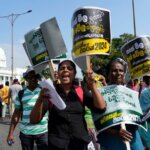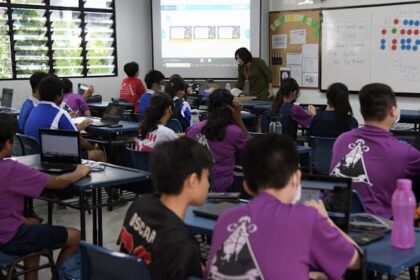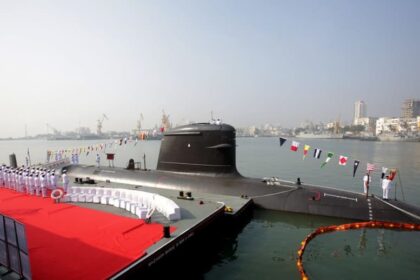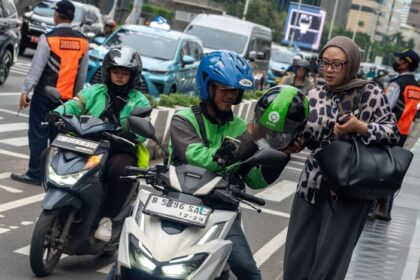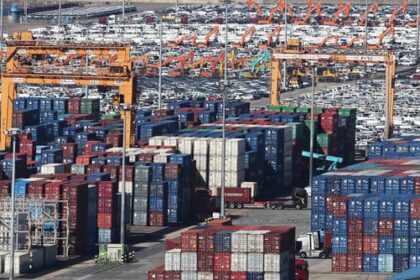Philippine Flood Control Scandal: Social Media Exposes ‘Nepo Babies’ and Sparks National Outrage
Public anger grows as lavish lifestyles of officials’ children are revealed amid a multi-billion peso corruption probe into flood management projects.
In late August 2025, a wave of public outrage swept the Philippines as citizens uncovered and shared evidence of the extravagant lifestyles of the children of politicians and contractors linked to a massive corruption scandal involving flood control projects. The controversy erupted after President Ferdinand Marcos Jr. disclosed that 545 billion pesos (about US$9.5 billion) had been spent on flood management since 2022, yet Metro Manila and nearby provinces remained submerged after just four days of heavy rain. Social media users, journalists, and celebrities have since mobilized to expose what they call “nepo babies”—the privileged offspring of those allegedly benefiting from government contracts—fueling calls for accountability and reform.
- Philippine Flood Control Scandal: Social Media Exposes ‘Nepo Babies’ and Sparks National Outrage
- How the Scandal Unfolded
- Social Media as a Tool for Accountability
- Celebrity Voices and Viral Satire Amplify the Scandal
- How the Corruption Worked: Ghost Projects and Budget Insertions
- The Political and Social Fallout
- What to Know
How the Scandal Unfolded
The scandal began to gain traction in July 2025, when relentless rains caused widespread flooding in Metro Manila and surrounding areas. Despite years of government spending on flood control, the infrastructure failed to protect communities. President Marcos Jr. responded by ordering an investigation into the Department of Public Works and Highways (DPWH) and the contractors responsible for these projects. The probe revealed that out of 2,409 registered contractors, only 15 companies had secured over 100 billion pesos—about 20 percent of the total budget—while the remaining funds were spread thinly among the rest.
Senate hearings soon followed, focusing on “ghost projects”—infrastructure that existed only on paper—and substandard construction. Lawmakers questioned why so many projects lacked feasibility studies and why the DPWH had not coordinated with agencies responsible for comprehensive flood management planning. Senator Rodante Marcoleta led the blue ribbon committee, which subpoenaed top contractors, some of whom failed to attend and now face possible arrest warrants. Public Works Secretary Manuel Bonoan confirmed that companies like Wawao Builders were under investigation for projects in Bulacan province that had received billions in funding but delivered little in terms of flood protection.
Senator Raffy Tulfo alleged that only 13.5 percent of project funds actually reached construction, with the rest siphoned off by officials and contractors. Senator Win Gatchalian warned that the DPWH could lose its budget if it continued to fund substandard projects, while Senator Migz Zubiri called for the identification and prosecution of lawmakers who lobbied for questionable budget insertions.
Social Media as a Tool for Accountability
As official investigations unfolded, ordinary Filipinos took matters into their own hands. Social media platforms, especially Reddit, became hubs for exposing the lavish lifestyles of those allegedly involved in the scandal. The subreddit lifestylecheckPH quickly gained nearly 7,000 followers, with users uploading screenshots and videos of “nepo babies” flaunting luxury cars, designer goods, private jets, and expensive vacations. These posts often compared the cost of such items to the average Filipino worker’s salary, highlighting the stark inequality and fueling public anger.
The term “nepo babies,” originally used to describe the children of Hollywood celebrities who benefit from family connections, was repurposed in the Philippines to refer to the offspring of politicians and business leaders accused of profiting from government contracts. Many of these individuals had large social media followings, but as the backlash intensified, some made their accounts private or deleted incriminating posts.
Sociologists and governance experts noted that online callouts can promote accountability by keeping public attention on corruption. However, they cautioned that lasting change requires institutional reforms and consistent scrutiny, especially as the country approaches future elections.
Celebrity Voices and Viral Satire Amplify the Scandal
The scandal’s visibility soared as Filipino celebrities and influencers joined the chorus of condemnation. Actress Anne Curtis referenced a report by journalist Jessica Soho, saying that greed posed a greater threat than floods. Singer Nadine Lustre expressed her anger and sadness over the misuse of public funds, while comedian Vice Ganda lamented the misuse of taxpayers’ money. TV host Bianca Gonzalez-Intal pointed out the contrast between the luxury enjoyed by officials’ children and the daily struggles of ordinary Filipinos.
Journalist Karen Davila called for public shaming of corrupt politicians, noting that in other countries, such behavior leads to imprisonment or disgrace. Economist JC Punongbayan questioned why flooding persisted despite flood control budgets exceeding 300 billion pesos annually. Former Senator Panfilo Lacson claimed that about 1 trillion pesos allocated for flood control since 2011 may have been lost to corruption.
Actor and TV personality Edu Manzano went viral with satirical, AI-generated images poking fun at the scandal. In one post, he appeared as an engineer on a construction site with the caption, “Relax, guys. Ako na bahala… sa road to forever. Bill, Bill, Bill.” Other posts parodied luxury spending, referencing viral remarks by nepo babies about buying luxury cars for their umbrellas. Manzano’s satire resonated with thousands online, reflecting widespread frustration and disbelief.
How the Corruption Worked: Ghost Projects and Budget Insertions
Investigative reports revealed the mechanics behind the flood control scam. Contractors and their government accomplices allegedly used several schemes to siphon off public funds:
- Ghost Projects: Some projects existed only on paper, with no actual construction taking place. Funds allocated for these projects were pocketed by contractors and officials.
- Substandard Materials: In cases where construction did occur, contractors used low-quality materials or cut corners, resulting in infrastructure that quickly failed or provided little real protection against floods.
- Budget Insertions: Lawmakers allegedly inserted specific projects into the national budget, steering contracts to favored companies in exchange for kickbacks.
- Overpricing: Project costs were inflated, with the excess funds distributed among those involved in the scheme.
Senate hearings highlighted that some contractors lacked the capital required to qualify for the projects they received, raising questions about the bidding process and oversight. The Department of Public Works and Highways was criticized for failing to coordinate with the River Basin Control Office, which is responsible for drafting a master plan for flood management.
Senator Bam Aquino argued that the ongoing probe and budget deliberations present an opportunity to fix deep flaws in flood control spending. However, critics pointed out that lifestyle checks—while useful for public shaming—do not address the root causes of corruption, such as the lack of transparency in the budget process and the influence of political dynasties.
The Political and Social Fallout
The scandal has reignited debates about political dynasties, nepotism, and the culture of impunity in the Philippines. The Center for People Empowerment in Governance (CenPEG) condemned the deep-rooted corruption, calling for transparency, accountability, and the rejection of political dynasties. They emphasized that corruption deprives citizens of essential services and called for an end to the misuse of public funds by powerful elites.
President Marcos Jr. ordered the DPWH to submit a list of all flood control projects from the last three years and launched the “Sumbong sa Pangulo” website, allowing citizens to monitor and report on government projects. The Bureau of Customs and the Bureau of Internal Revenue also began investigating luxury car imports and contractors linked to the scandal.
However, some commentators questioned the credibility of the Marcos administration’s anti-corruption efforts, given the family’s own history of extravagance and unresolved allegations of ill-gotten wealth. An opinion piece in Rappler argued that lifestyle checks are insufficient and that true reform requires banning lawmakers from owning construction companies and making the DPWH budget immune to political insertions.
Whistleblowers who have come forward with information about the scandal face significant risks. Batangas 1st District Rep. Leandro Leviste warned that contractors and congressmen implicated in the corruption may retaliate against those exposing wrongdoing, highlighting the dangers of challenging powerful interests in the Philippines.
What to Know
- 545 billion pesos (US$9.5 billion) has been spent on flood control since 2022, yet major flooding persists in Metro Manila and nearby provinces.
- Only 15 contractors secured over 100 billion pesos, raising concerns about favoritism and budget allocation.
- Social media users exposed the lavish lifestyles of “nepo babies”—children of politicians and contractors—fueling public outrage.
- Senate hearings revealed widespread use of ghost projects, substandard materials, and budget insertions to siphon off funds.
- Celebrity voices and viral satire amplified calls for accountability and reform.
- President Marcos Jr. ordered investigations, lifestyle checks, and the creation of a public monitoring website, but critics question the effectiveness of these measures.
- Experts and advocacy groups call for institutional reforms to address the root causes of corruption and protect whistleblowers.



